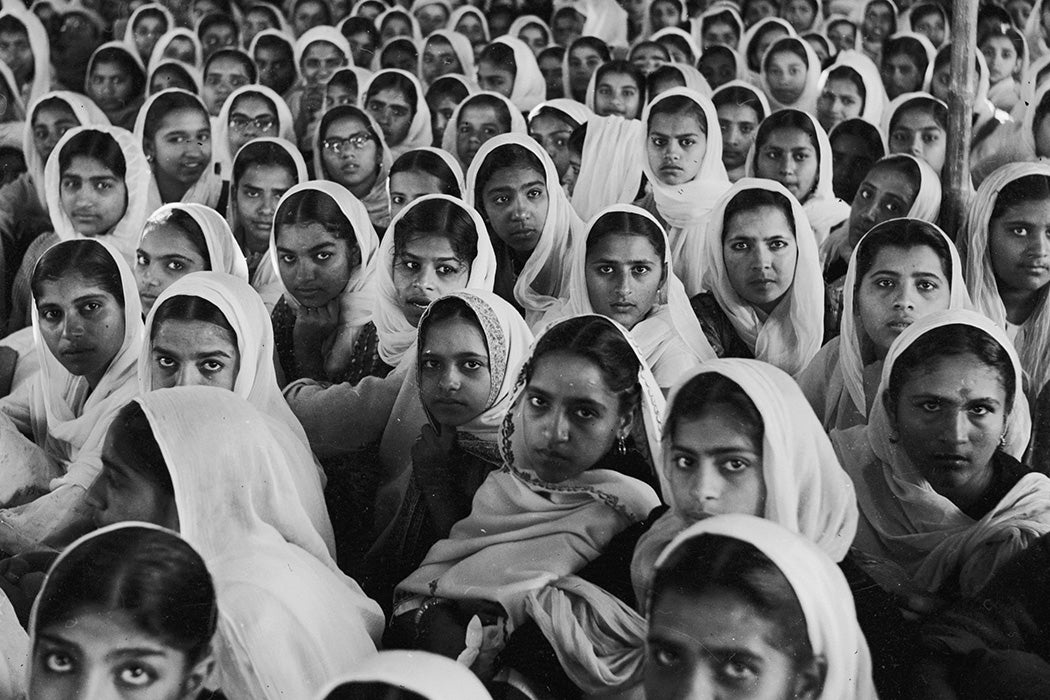Britain’s hasty departure in 1947 from the Indian subcontinent came with a hefty price. The region was partitioned into religion-based territories, with India populated largely by Hindus, and West and East Pakistan by Muslims. This division of land sparked unprecedented communal violence and led to a mass exodus of people and a tremendous loss of life, property, and identity. Though their stories were largely constrained to the margins immediately following Partition, it was the women who perhaps suffered the most. Over the few decades, there have been various attempts to record the plight of women during Partition and its aftermath, in numerous works of fiction as well as survivors’ oral histories.
Two papers published in the Economic & Political Weekly in 1993 address this harrowing history. The first of these, co-authored by Ritu Menon and Kamla Bhasin, looks at “the fractured reality of the time through social histories and tries to communicate an experience of Partition through women who were destituted in one way or the other by the events.” The second, by Urvashi Butalia, seeks to examine whether women had any choice as events played out or if their decisions and actions were dictated by their circumstances.
Women came to represent the perceived “honor” [izzat] of both individual men and the state. This symbolism led to unspeakable violence perpetrated on them by both outsiders and their own family members. As Menon and Bhasin point out, “Husbands, fathers, brothers and even sons, could turn killers” as they sought to eliminate any chance of dishonor being thrust upon their family name and religion.
Butalia writes that countless women, particularly in Sikh families, were murdered by their own relatives to prevent them from converting to a new religion. Just as many women may have died by suicide. The violence against women was specific and gendered.
“[T]here are accounts of innumerable rapes,” explains Butalia, “of women being stripped naked and paraded down streets, of their breasts being cut off, of their bodies being carved with religious symbols of the other community…”
That women took their own lives was demonstrated by the tragedy in the village of Thoa Khalsa in Punjab. In March 1947, around ninety women jumped into a well to avoid facing the enemy. For some, this may have been a personal choice, but Butalia argues that “for others, the ‘decision’ must have been one they felt ‘compelled’ to take because of the particular circumstances of the situation.”
Later, however, women who had survived the violence of Partition were denied all agency. Under the Central Recovery Operation (1948–1956) of the government of India, both India and Pakistan agreed to return to their families and native homes the women who had been abducted during the chaos. However, a number of these women had already converted their religion, married, given birth to the children of their so-called abductors, and settled, often happily, into their new lives. This “recovery” was against their wishes.
“It is by no means our intention to suggest that the predicament these women found themselves in was not traumatic or fraught with anxiety and uncertainty,” write Menon and Bhasin,
merely that it would be false to presume that their lot was uniformly grim, their ‘abductors’ without exception ‘bestial’ or unreliable and craven, and to assert, as [recovered victim] Mridula Sarabhai did, that recovery was “an effort to remove from the lives of thousands of innocent women the misery that is their lot today and to restore them to their legitimate environment where they can spend the rest of their lives with izzat.”
Some women lamented leaving their children behind when they were repatriated, and, afraid of being castigated for being “impure,” they often preferred to live in a care home (ashram) to joining their families.
The 1947 Inter-Dominion Treaty legalized India’s Central Recovery Operation and led to an act of parliament that was strictly enforced until 1957. Menon and Bhasin question why the Indian government pursued this plan despite the tremendous resistance they met from the women who were the supposed beneficiaries.
Weekly Newsletter
“For India, a country that was still reeling from Partition and painfully reconciling itself to its altered status, reclaiming what was by right its ‘own’ became imperative,” they conclude. The repatriation of women helped the new nation “establish its credentials as a responsible and civilised state, one that fulfilled its duties towards its citizens both in the matter of securing what was their due, and in confirming itself as their protector.”
Highlighting the fact that the valorous acts of women are lauded in memorial celebrations while abductions are glossed over to this day, Butalia argues that our understanding of agency “needs to take into account notions of the moral order which is sought to be preserved when women act, as well as the mediation of the family, community, class and religion. Today, more than ever,” she concludes, “questions of violence, of women’s participation in it, of their agency and collusion, are becoming important.”







